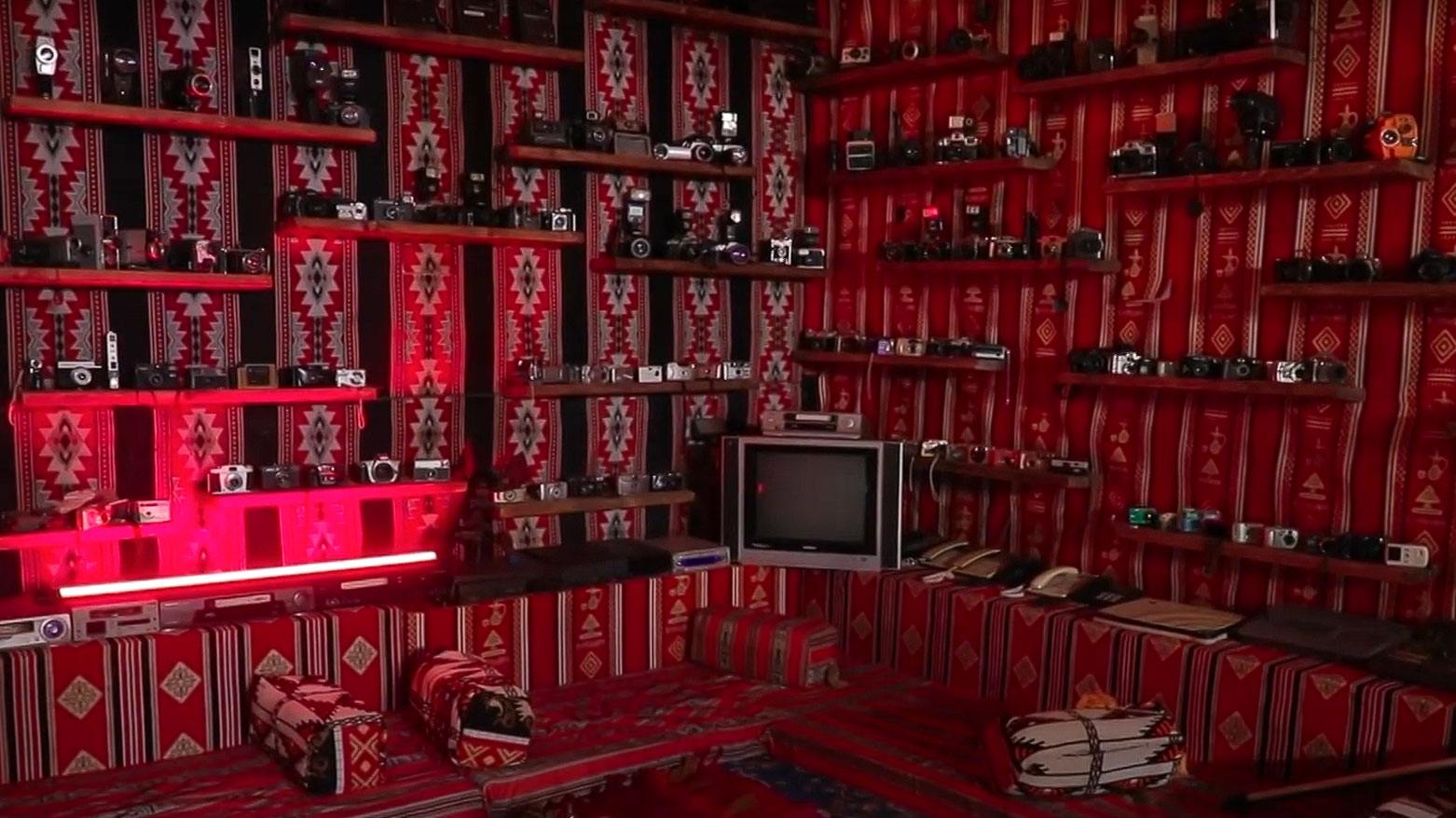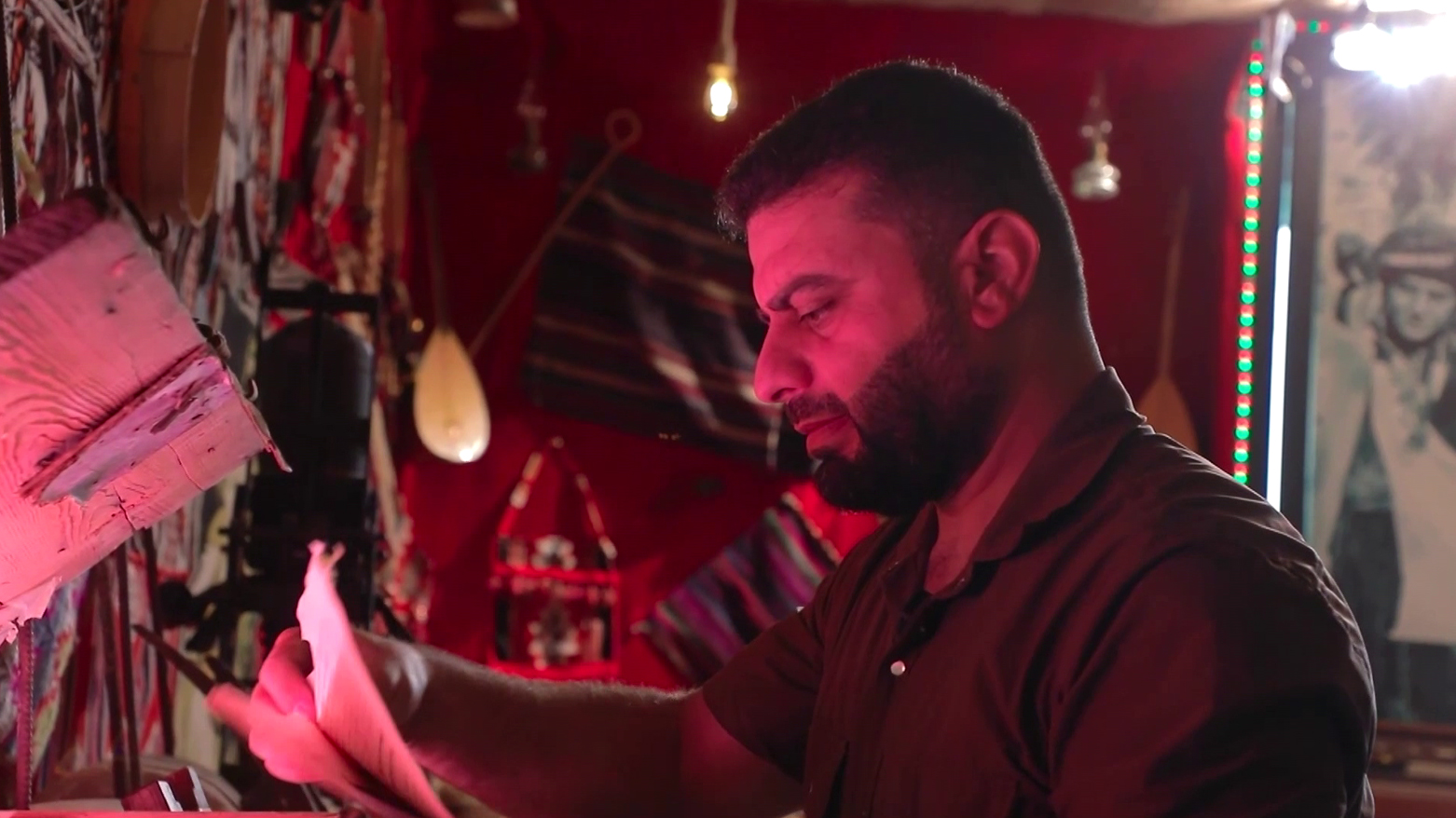In Khanke, One Man’s Dream Preserves a Community’s Past
In Khanke, Ivan Haji has single-handedly founded a museum, spending six years collecting over a thousand artifacts that tell the story of his community's heritage.

Erbil (Kurdistan24) - Step inside a modest building in the town of Khanke in Duhok, and the present moment begins to recede, replaced by the vibrant echoes of a hundred different yesterdays. The walls are a deep, enveloping red, adorned with the rich, geometric patterns of traditional Kurdish textiles.
On simple wooden shelves, a silent history of captured moments is displayed in a long line of vintage cameras, their glass lenses like patient, unblinking eyes that have witnessed decades of life.
A large-format bellows camera stands on a tripod at the center of the room, a relic of a more deliberate and artistic age of photography. In this carefully curated space, every object has a story, from the weathered farming tools hanging on the wall to the old electronic devices that once represented the cutting edge of technology.
This is the culmination of a singular vision, a cultural sanctuary built from scratch by one young man, Ivan Haji, who has spent the last six years on a dedicated quest to gather and preserve the scattered fragments of his people's memory.
Ivan Haji, the founder and heart of this unique museum, spoke to Kurdistan24 about the remarkable scope of his collection.
The museum, he explained, is now home to more than a thousand distinct pieces of folklore and historical items, each one a tangible link to the daily lives, labor, and artistry of previous generations.
The collection is a testament to the breadth of his vision. Shelves are filled with an astonishing array of cameras, charting the evolution of photography from cumbersome manual devices to the more compact models of the late 20th century.
Old telephones, their rotary dials and heavy handsets a world away from today’s smartphones, sit alongside bright red typewriters and other electronic gadgets that were once central to communication and commerce.
The collection also pays deep homage to the region's agricultural roots, featuring old farming tools that connect visitors to the soil and the hard work that has sustained the community for centuries.
Interspersed throughout are items of profound cultural significance: traditional stringed instruments hang silently, their melodies lingering in the imagination; intricately woven bags tell stories through their patterns and colors; and everyday household items offer an intimate glimpse into the domestic life of the past.
Adding another, vital dimension to the space, there is also a library inside the museum. In a beautiful gesture of solidarity and support, local authors have brought their books to be housed here, creating a corner where visitors can not only see the past but also read the stories and ideas that have emerged from their culture.
The journey to create this remarkable institution was not a simple one. It was a painstaking labor of love, a mission that consumed Ivan Haji for the better part of a decade. He mentioned that collecting all of these items was an incredibly difficult task, an endeavor that took him nearly six years to bring to fruition.

His process was a deeply personal and grassroots one. He often visited homes throughout the community, going door-to-door to patiently explain his ambitious vision. He was not merely a collector seeking objects, but a storyteller seeking to save the narrative of his town.
He would ask residents if they had any old items, things that might be tucked away in storage or forgotten in an attic, explaining his intention to establish a museum where these pieces of their shared history could be honored and preserved for future generations.
His passion and sincerity were contagious. As word of his project spread, a wonderful transformation occurred. The quest of one man slowly evolved into a collective community effort. People, having learned of his noble intent, began to bring items to him themselves, contributing their own family heirlooms and forgotten treasures to the growing collection.
This community-driven support became the cornerstone of the museum's success and is a source of immense pride and gratitude for its founder.
He stated that this is the first time a museum of this kind has ever been opened in this region in general, a fact that underscores the profound significance of his achievement. He was not just adding to a pre-existing cultural landscape; he was creating a vital new landmark, filling a void that had left the tangible history of the area at risk of being lost forever.
In a heartfelt acknowledgment, he explicitly thanked the people for their incredible cooperation and generosity in donating so many of the items that now fill the museum.
This humility and recognition of the community’s role is central to the spirit of the place. It is not just Ivan Haji's museum; it is Khanke's museum, a space built by the people, for the people, reflecting a collective desire to see their history cherished and remembered.
Each donated artifact represents an act of trust, a belief in his vision, and a shared commitment to preserving their unique cultural identity for their children and their children's children. The result is a powerful and authentic testament to what can be accomplished when one individual’s dream resonates with the heart of an entire community.